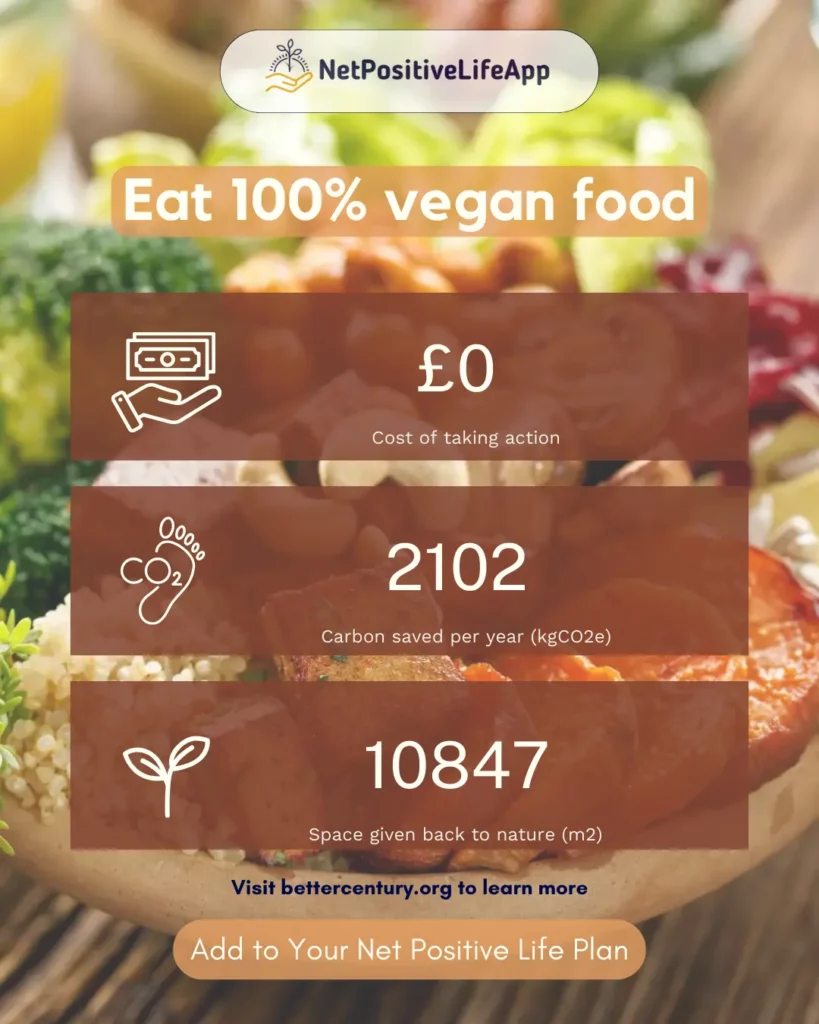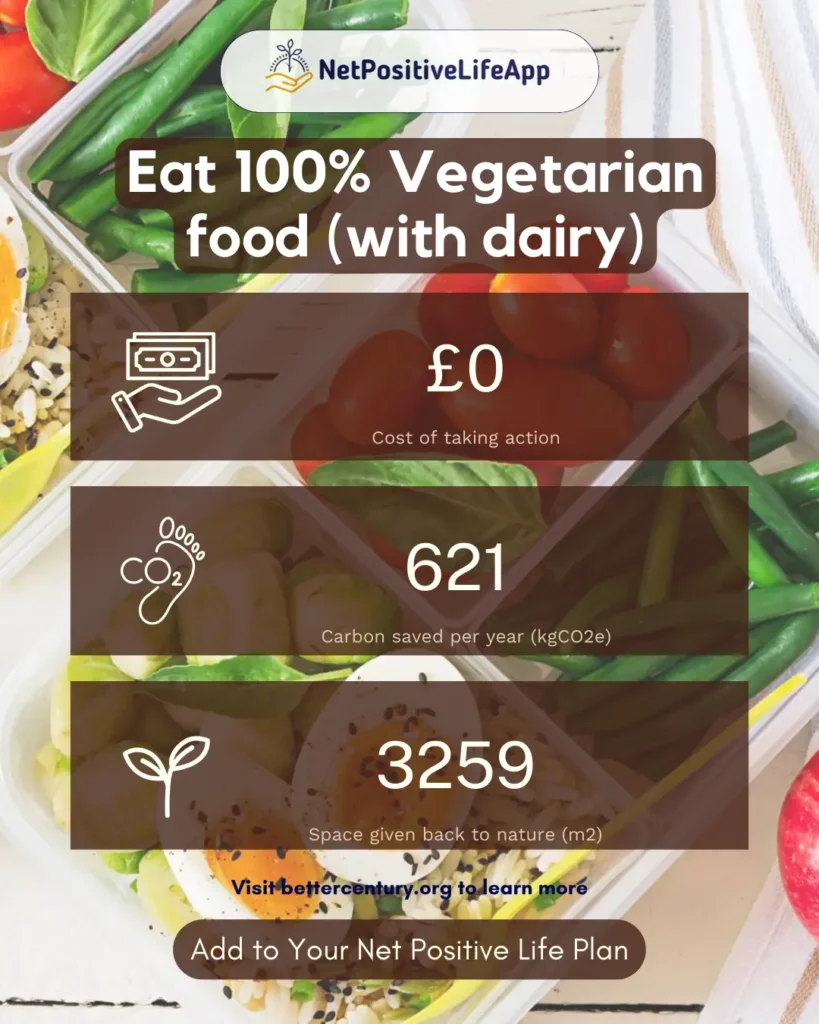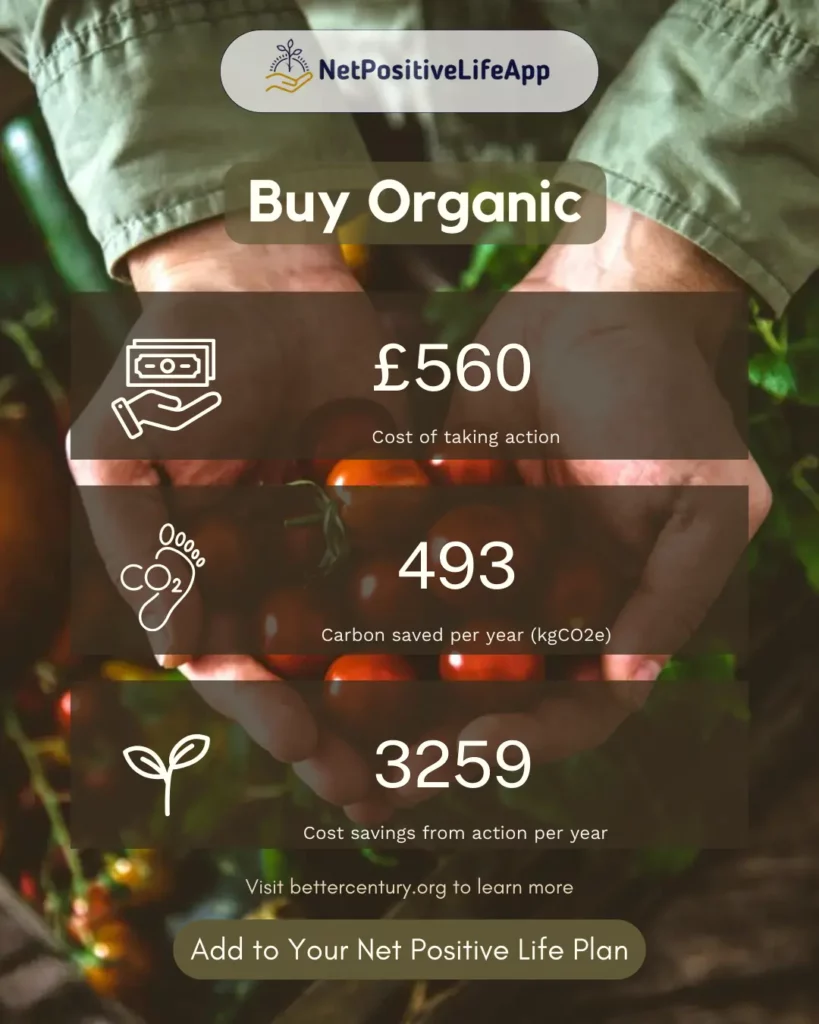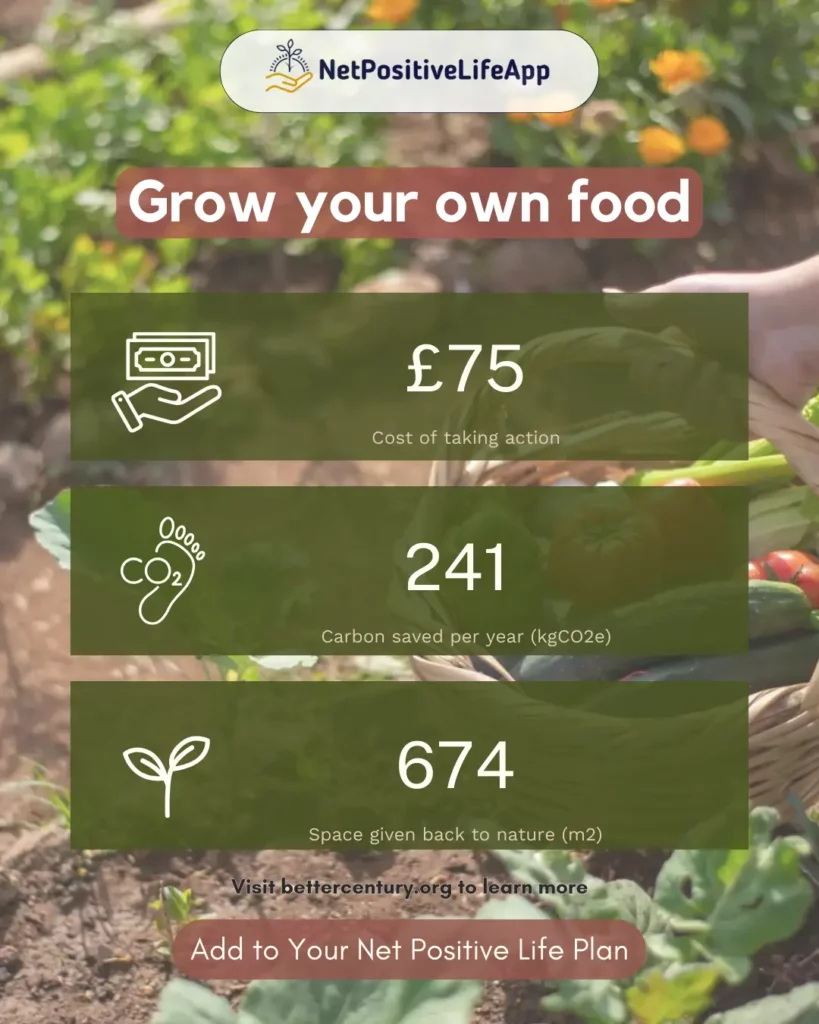Whether you’re a seasoned environmentalist or just dipping your toes into the waters of environmental awareness, this post is your invitation to make a tangible difference for nature.
We outline three things you can do for nature in your life!
Be a pal to Mother Nature and read on.
Ever stopped to think about how much humans are taking over nature’s turf? Every day, it seems like cities and buildings are spreading, leaving less room for trees and wildlife.
But what if there’s a way to flip the script? What if, by taking a few actions, we could make space for nature allowing it to bounce back?
Join us as we break down the 3 most impactful things you can do to for nature and wildlife so they can flourish and continue to support life as we know it.
(Hint Hint – it’s got a lot to do with food 😋)
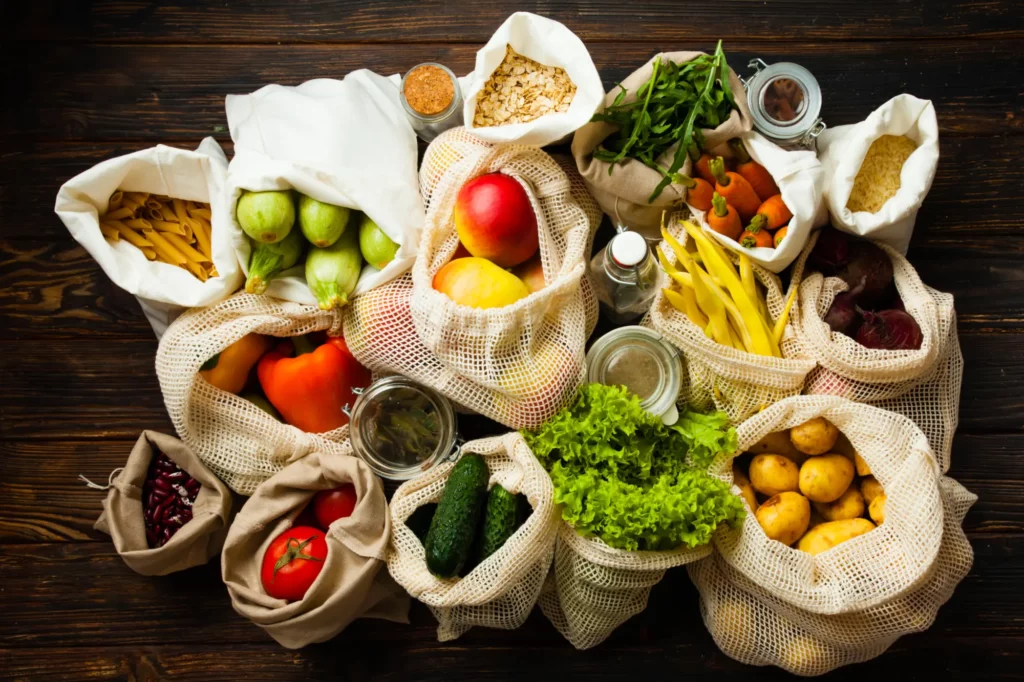
1. Eat 100% Vegan Food
By far the most impactful action you can take to give space back to nature is eating 100% vegan food. Just take a look at the infographic below! By following a vegan diet you could give 10,487m2 back to nature! This is because eating animal products is incredibly inefficient, requiring 8 times the land to produce the same number of calories as plant based food. It’s estimated that a substantial portion of global agricultural land is used to produce feed crops for livestock. By eliminating the need for this feed production, more land could be freed up for other purposes, including rewilding or restoring natural habitats.
But don’t worry! If you don’t think you can commit to being 100% vegan – we still have good news. Eating plant-based for 4 out of 5 days or even 3 out of 5 days a week is still in the top ranks for giving space back to nature. You can compare the numbers here. Alternatively, you can be 100% vegetarian (which includes dairy) and still have a beneficial impact. We’d like to think that mother-nature will be grateful with the effort you’re able to put in.
2. Buy organic
Organic food offers benefits in terms of nutritional and health value, while also having a smaller impact on the environment. Organic systems significantly reduce their impact on nature, with farms within these systems supporting excellent levels of insect and bird populations. Additionally, they maintain soil with high organic material content, effectively locking carbon into the soil.
Organic farming systems prioritize sustainability and environmental stewardship. By avoiding synthetic pesticides and fertilizers, organic farms reduce chemical runoff into waterways and minimize soil erosion. Moreover, organic farming practices such as crop rotation and the use of cover crops contribute to soil health and biodiversity conservation. e.
Buying organic food can be challenging, as not all the goods you may want to buy are organic. However, most big supermarkets have good ranges of organic food, and for some produce, a visit to a specialist retailer or buying online can be done.
3. Grow your own food
Producing home-grown food not only offers the satisfaction of cultivating your own sustenance but also holds benefits for nature. By transforming even the smallest urban spaces into green havens, you’re providing vital refuges for pollinators like bees and butterflies.
Growing food at home also reduces reliance on industrial agricultural practices, which often involve the use of synthetic fertilizers and pesticides that can harm soil health and biodiversity. By opting for organic gardening methods and nurturing the soil with compost and natural amendments, you’re promoting a healthier, more resilient environment.
Everyone has the capacity to grow food at home, be it in pots indoors, on patios or, if lucky enough, in gardens or allotments. Learn about growing cycles and cultivate food from seeds. Source soil and get into the practice of regular watering and care for the plants, which can help ground daily activities. There are numerous websites to learn how to grow food at home, but do also think about following people on social media for ongoing tips and support.
To get started, get some seeds, plant them, provide water and care and embark on the journey of producing home-grown food!
Wondering if there’s anything else you can do for nature?
Here’s a full list:
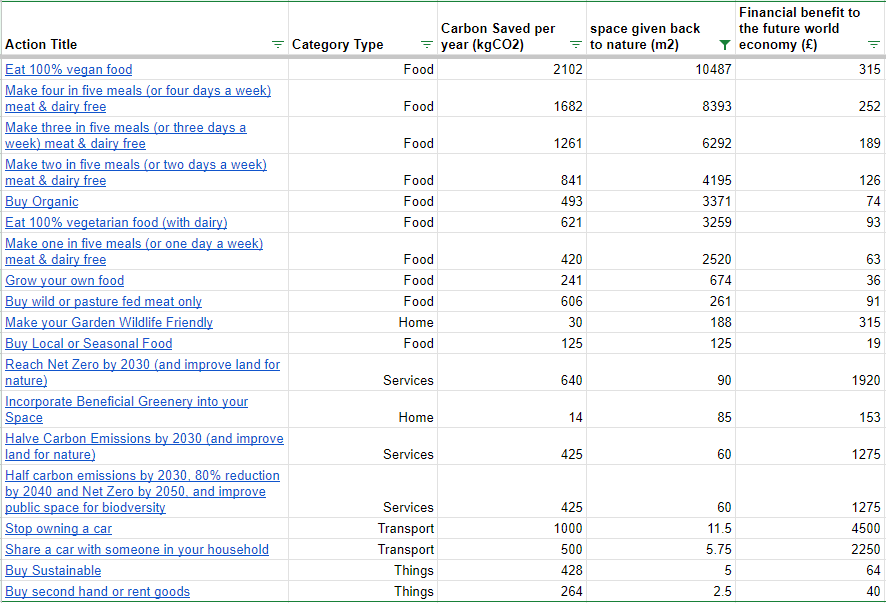
You can explore and log all of these actions on the NetPositiveLifeApp to make a Net Positive Plan for nature and climate.
So there you have it – Thinking about the food we eat and where it comes can make a big difference for nature and biodiversity.
Which of these actions would you be willing to try to protect our precious biodiversity? Or maybe you’re doing all of them already? Have a think about it and then make a plan to be net positive for nature and climate using the NetPositiveLifeApp – an excellent tool to grasp the real possibilities of what you can do for nature and climate.
Together, let’s create an environment where all life thrives!


